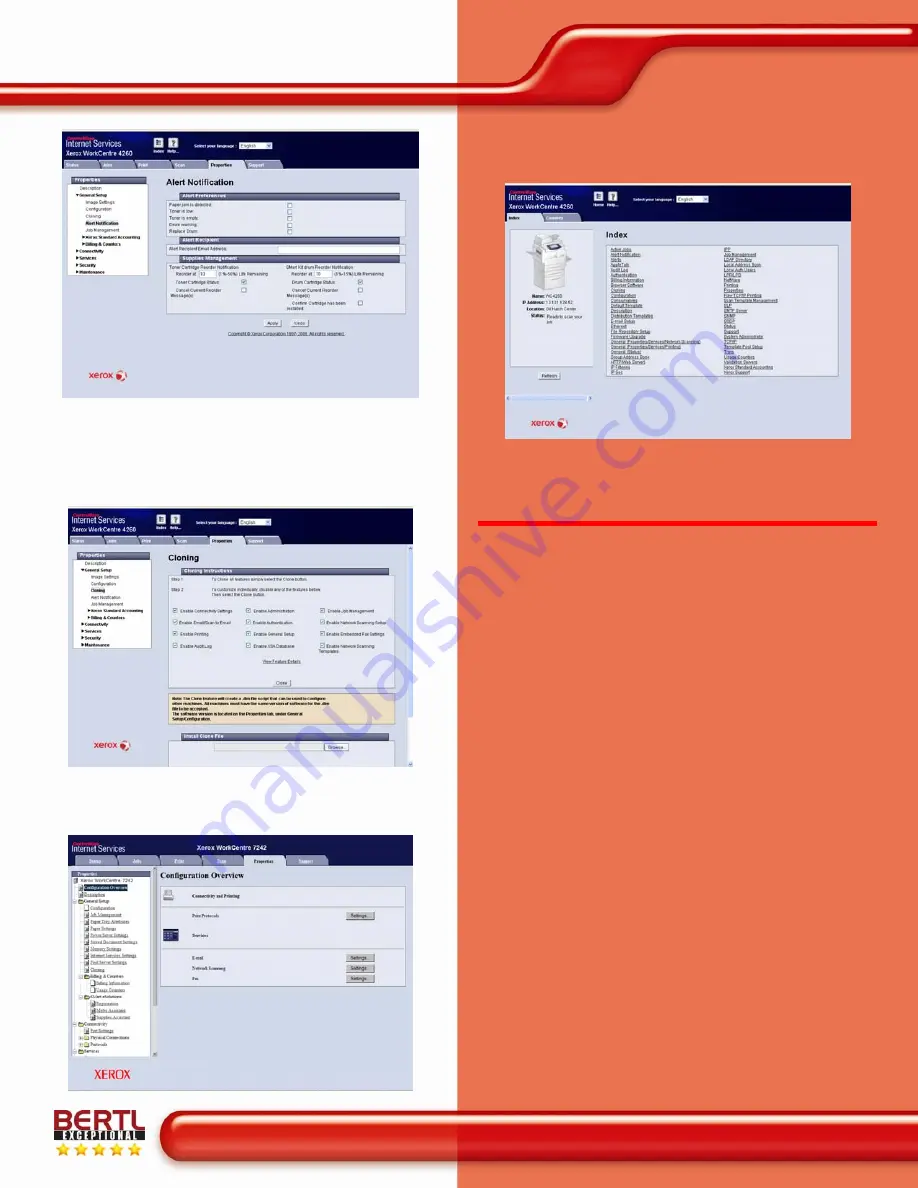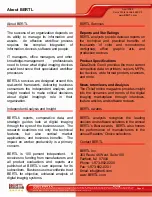
Ease of Use
April 2009
Xerox WorkCentre 4260 XF
www.BERTL.com
Copyright © 2009 BERTL Inc.
April 2009
All Rights Reserved. The license under which this document is made available and applicable law prohibit any reproduction or further transmission of any portion of this document. This
document may only be viewed electronically through the www.BERTL.com Web site and may not be stored in electronic or hard copy format. Any reproduction of trademarks is strictly
prohibited. BERTL accepts no responsibility for any inaccuracies or omissions contained in this document.
Page 33
Administrators can configure automatic e-mail alerts so that
specified users are automatically alerted via e-mail when
specified error conditions occur (such as low paper or toner). This
can help reduce downtime and improve efficiencies. Similar
competitive devices allow for up to three email recipients.
The properties tab provides administrators with the ability to clone
device settings from one device to another. This feature improves
productivity and ensures that all of the devices on the network
have the same device and security settings for added protection.
Administrators can configure and manage both the network and
device settings such as print protocols, e-mail, network scanning,
and fax settings directly from CentreWare Internet Services.
CentreWare also provides quick access links for device
configuration, cloning, e-mail set up, SNMP, firmware, and Xerox
technical support.
DEVICE MANAGEMENT
An efficient device-management software system is critical
in order to take maximum advantage of a device’s feature
set, be it a printer, fax, scanner or multifunctional
peripheral (MFP).
Device management is typically provided via a Web server
on the device controller. This Web server is accessed
using any desktop Web browser. The user simply enters
the device’s IP address into the address line of their Web
browser. Note that administrators and office users have
different management and monitoring needs.
General Office Users
As noted previously, end users want to know if a device is
capable of handling a particular job, current status (such as
“Ready”), and current supply levels (media, toner, ink), as
well as if there are any other jobs waiting to be printed.
Administrators
The aim of most network administrators is to obtain greater
control over networked devices without having to leave
their own desk. From their computer desktop, they would
like to be able to set up the device on the network,
establish security for IP filter ranges, apply cost-control
measures, check supply levels, and set up automated e-
mail alerts for different staff members when problems
occur or maintenance needs must be met.
Due to the nature of a device’s Web server, this capability
is usually limited to an individual device. However, many
manufacturers also include a network device- management
fleet tool, which allows for the concurrent monitoring and
management of multiple devices connected to the network.
Many also provide plug-ins for the most popular IT device-









































